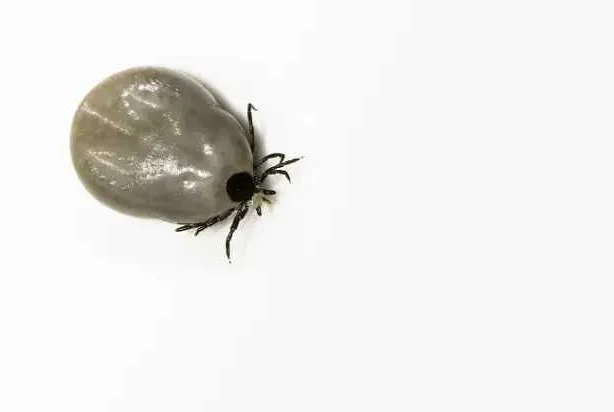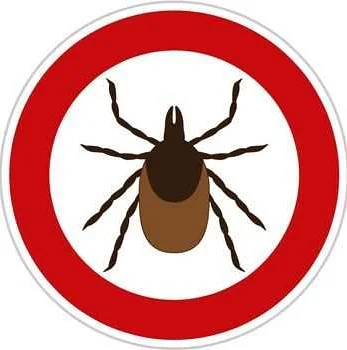St. Petersburg doctors: Victims of ticks should not hope for emergency prevention
St. Petersburg doctors caution against relying on emergency prevention for tick bites. Learn about the risks and proper steps to take in case of a tick bite to ensure your health and safety.
As tick season begins, doctors in St. Petersburg are cautioning against the use of emergency prevention measures for tick bites. In recent years, there has been a spike in the number of tick-borne illnesses in the region, leading to increased concern among residents.
While it is important to take precautions to avoid tick bites, such as wearing long sleeves and pants, using insect repellent, and performing thorough tick checks after spending time outdoors, doctors emphasize that emergency prevention methods, such as burning ticks or using harsh chemicals on the skin, can do more harm than good.
Dr. Anna Petrova, a leading expert on tick-borne diseases in St. Petersburg, explains that these emergency prevention methods can cause the tick to regurgitate its pathogens into the body, increasing the risk of infection. Additionally, burning ticks can release harmful toxins into the air, which can be hazardous to human health.
“It is crucial to correctly and safely remove ticks from the body as soon as possible,” says Dr. Petrova. “By using fine-tipped tweezers, grasp the tick as close to the skin’s surface as possible and pull upward with steady, even pressure. Avoid twisting or jerking the tick, as this can cause the mouthparts to break off and remain in the skin.”
St. Petersburg doctors recommend seeking medical attention if a tick bite leads to symptoms such as fever, rash, fatigue, or joint pain. Early diagnosis and treatment of tick-borne illnesses, such as Lyme disease, are crucial for a successful recovery.
“It is important for the public to be educated on tick bite prevention and safe removal methods,” advises Dr. Petrova. “By following these guidelines, we can reduce the risk of tick-borne illnesses and ensure a healthier community.”
St. Petersburg doctors emphasize tick bite risks
St. Petersburg doctors are urging residents to be aware of the risks associated with tick bites. With the arrival of warmer weather, ticks are becoming more active and pose a threat to public health. In recent years, there has been an increase in the number of tick-borne diseases, such as Lyme disease and tick-borne encephalitis, in the region.
- Lyme disease is a bacterial infection transmitted through tick bites. Early symptoms include fever, headache, fatigue, and a characteristic skin rash. If left untreated, it can lead to more serious complications affecting the joints, heart, and nervous system.
- Tick-borne encephalitis is a viral infection that affects the central nervous system. Symptoms may include fever, headache, muscle pain, and neck stiffness. Severe cases can lead to inflammation of the brain and spinal cord, resulting in long-term neurological damage.
- Preventing tick bites is crucial in reducing the risk of contracting these diseases. Residents are advised to avoid tall grasses and wooded areas, use insect repellents containing DEET, wear long-sleeved shirts and pants, and perform thorough tick checks after spending time outdoors.
- If a tick is found attached to the skin, it should be carefully removed using fine-tipped tweezers. The bite site should be cleaned with soap and water and monitored for any signs of infection or illness.
St. Petersburg doctors remind the public to seek medical attention if they develop symptoms after a tick bite, as early diagnosis and treatment can prevent the progression of tick-borne diseases. It is important to stay informed and take necessary precautions to stay safe during tick season.

St. Petersburg, like many other regions, is not immune to the risks associated with tick bites. The city, being surrounded by forests and parks, is a favorable environment for ticks, which increases the chances of encountering these parasites.
Tick bites can lead to several tick-borne diseases, including Lyme disease, tick-borne encephalitis (TBE), and anaplasmosis. These diseases can have serious consequences if not diagnosed and treated promptly.
Lyme disease is the most common tick-borne infection in St. Petersburg. It is caused by the bacterium Borrelia burgdorferi and can lead to a range of symptoms, including fever, fatigue, joint pain, and a characteristic skin rash. If left untreated, Lyme disease can cause complications affecting the joints, heart, and nervous system.
Tick-borne encephalitis is another significant concern in St. Petersburg. It is a viral infection that affects the central nervous system and can cause severe neurological symptoms, including inflammation of the brain. TBE can have long-term effects on cognitive function and mobility.
Anaplasmosis is a bacterial infection transmitted by ticks. It can cause flu-like symptoms, such as fever, headache, and muscle aches. In severe cases, anaplasmosis can lead to organ failure and even death.
Preventing tick bites is crucial to avoid these diseases. St. Petersburg residents and visitors should take precautions, such as wearing long sleeves and pants, using insect repellents, and avoiding tall grass and wooded areas. It is also important to conduct thorough tick checks after spending time outdoors and remove any attached ticks promptly using proper techniques.
If a tick bite is suspected, it is advisable to seek medical attention to assess the risk of infection and receive appropriate treatment if necessary. St. Petersburg doctors can provide guidance on tick-borne diseases, their symptoms, and the necessary preventive measures to stay safe in tick-infested areas.
| Lyme Disease | Borrelia burgdorferi | Fever, fatigue, joint pain, skin rash |
| Tick-Borne Encephalitis | TBE virus | Neurological symptoms, brain inflammation |
| Anaplasmosis | Anaplasma bacteria | Flu-like symptoms, organ failure |
Dangers of emergency prevention methods
Tick bites can be a cause for concern due to the potential transmission of diseases such as Lyme disease and tick-borne encephalitis. However, there are dangers associated with emergency prevention methods that individuals should be aware of.
One common method of emergency prevention is the use of alcohol or petroleum jelly on the tick in an attempt to suffocate it. However, this can be dangerous as it may cause the tick to regurgitate its stomach contents into the bite wound, increasing the risk of disease transmission.
Another emergency prevention method is the use of tweezers or other sharp objects to remove the tick. This can be dangerous as it may result in the tick’s body being crushed, again increasing the risk of disease transmission.
It is important to note that ticks should be removed carefully and using the proper tools, such as fine-tipped tweezers, to grasp the tick as close to the skin as possible. The tick should then be pulled straight out with a steady motion, ensuring that the mouthparts are fully removed.
If a tick bite occurs, it is important to monitor the area for any signs of infection or illness, such as a rash or flu-like symptoms. If any symptoms develop, it is recommended to seek medical attention immediately.
| Use of alcohol or petroleum jelly | Tick may regurgitate stomach contents, increasing disease transmission risk |
| Use of tweezers or sharp objects | Tick’s body may be crushed, increasing disease transmission risk |
Tick bite prevention tips from St. Petersburg doctors

Tick bites can lead to serious health conditions, such as Lyme disease. To help prevent tick bites, St. Petersburg doctors recommend following these tips:
- Cover exposed skin when spending time outdoors in tick-infested areas. Wear long sleeves, long pants, and closed-toe shoes.
- Apply a tick repellent containing DEET or permethrin to exposed skin and clothing. Be sure to follow the instructions on the product label.
- Perform regular tick checks on yourself, your family members, and your pets after spending time outside. Look for ticks on the body, focusing on areas such as the scalp, ears, underarms, and groin.
- If you find a tick attached to your skin, use fine-tipped tweezers to grasp the tick as close to the skin’s surface as possible. Gently pull upward to remove the tick. Make sure to clean the area with soap and water.
- Avoid walking through tall grass and brushy areas where ticks may be present. Stick to well-maintained trails and paths.
- Keep your yard tidy by mowing the grass regularly and removing leaf litter. This will help reduce tick populations in your outdoor space.
- If you live in a tick-prone area, consider treating your clothing and gear with permethrin to provide an extra layer of protection against ticks.
- Shower within two hours of coming indoors to wash away any unattached ticks and perform a final tick check.
- If you develop a rash, fever, or other symptoms after a tick bite, seek medical attention promptly. Early treatment can help prevent complications.
By following these tick bite prevention tips, you can reduce your risk of tick bites and the potential health consequences associated with tick-borne diseases.
Choosing appropriate clothing for outdoor activities
When spending time outdoors, it is important to choose appropriate clothing to protect yourself from tick bites. Wearing the right clothing can greatly reduce your risk of being bitten by ticks and contracting tick-borne diseases.
Here are some tips for choosing the right clothing:
| 1. Long sleeves and pants | Wearing long sleeves and pants can provide a physical barrier between ticks and your skin. Opt for lightweight, breathable fabrics that cover your arms and legs. |
| 2. Light-colored clothing | Ticks are easier to spot on light-colored clothing, making it easier to remove them before they have a chance to bite. Avoid wearing dark-colored clothes that can make it harder to see ticks. |
| 3. Tuck your pants into your socks | Tucking your pants into your socks can help create a barrier against ticks crawling up your legs. This can be especially useful when walking through tall grass or wooded areas. |
| 4. Use tick repellent | In addition to clothing, it is important to use tick repellent on exposed skin. Look for products that contain DEET or picaridin, and follow the instructions on the label. |
| 5. Check your clothing and body for ticks | After spending time outdoors, always check your clothing and body for ticks. Remove any ticks promptly and properly to reduce the risk of tick-borne diseases. |
By following these tips and choosing appropriate clothing for outdoor activities, you can decrease your chances of getting bitten by ticks and protect yourself from tick-borne diseases.